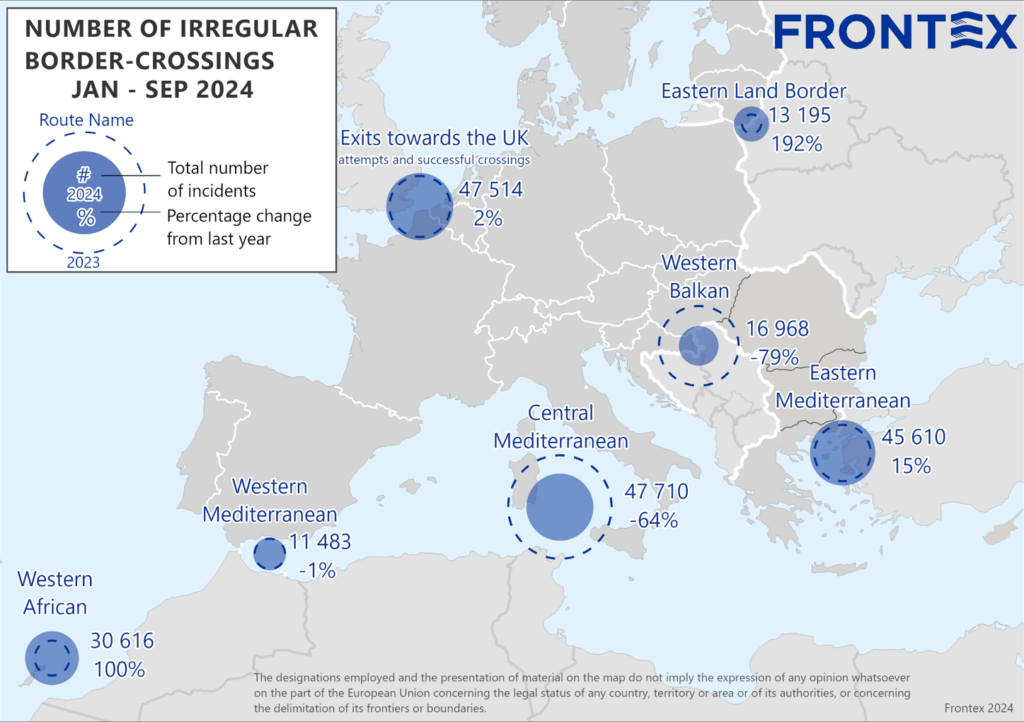Brussels – In the first nine months of this year, irregular border crossings fell 42 percent to 166,000, according to Frontex, the European Border and Coast Guard Agency.
Three percent less than the August preliminary data, which refers to the number of detections of irregular crossing at the external borders of the European Union (taking into account that the same person may cross the border several times in different locations at the external border).

By route, the “most active to the EU” was the Central Mediterranean, with the decrease stable at minus 64 percent and 47,700 arrivals. The other Mediterranean route continues to grow, with the Eastern route registering an increase of 15 percent and the largest number of detections for September.
Crossings in the Western Balkans fell further (down 79 percent, two points more than in August), registering “the highest drop of all major migration routes to the EU.”
In contrast, crossings in the western Africa route show no signs of decreasing, with the number doubling “compared to the same period (January-September, n.ed.) last year.” The same goes for the eastern land borders, with a 192 percent increase, but registering a slight decrease from preliminary August data.
The Channel Route recorded 47,514 crossings, an increase of 2 percent, significantly less than the 13 percent increase recorded in August and the 22 percent increase in July.
English version by the Translation Service of Withub









